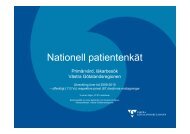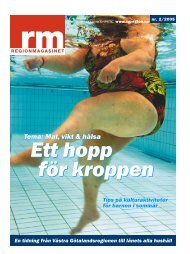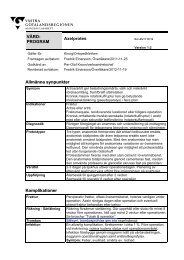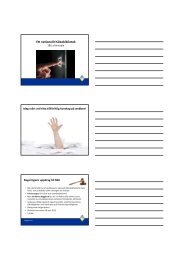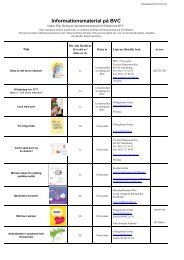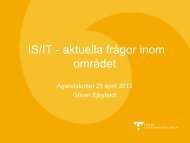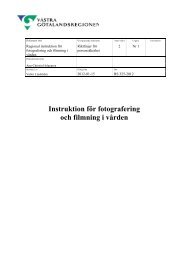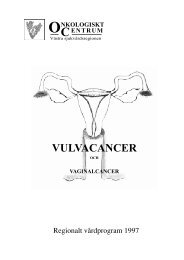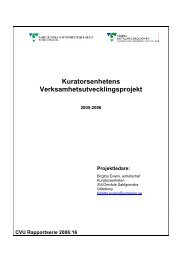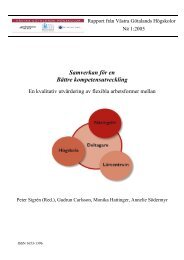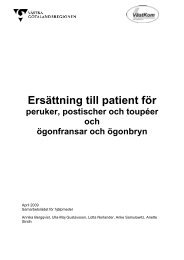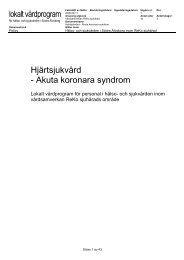FOURTEENTH ANNUAL EUROPEAN PRESSURE ULCER ...
FOURTEENTH ANNUAL EUROPEAN PRESSURE ULCER ...
FOURTEENTH ANNUAL EUROPEAN PRESSURE ULCER ...
You also want an ePaper? Increase the reach of your titles
YUMPU automatically turns print PDFs into web optimized ePapers that Google loves.
Thursday September 1st<br />
Proceedings of the 14th Annual European Pressure Ulcer Meeting<br />
Oporto, Portugal<br />
A 3-in-1 perineal care washcloth impregnated with dimethicone 3% vs. water and pH<br />
neutral soap to prevent and treat incontinence-associated dermatitis: a randomized<br />
controlled clinical trial<br />
Dimitri BEECKMAN 1*, 2, 3 , Tom DEFLOOR † 2 , Lisette SCHOONHOVEN 4 , Katrien VANDERWEE 2<br />
1* King’s College London, United Kingdom, dimitri.beeckman@kcl.ac.uk, 2 Ghent University, Belgium,<br />
3 Artevelde University College, Belgium, 4 Radboud University Medical Center, The Netherlands<br />
Introduction<br />
Incontinence- associated dermatitis (IAD) is an<br />
inflammation of the skin in the genital, buttock or upper<br />
leg areas that occurs when urine and/or feces comes<br />
into contact with the skin [1]. The past decade has<br />
seen a huge growth in publications focusing on the<br />
clinical observation of IAD and the differentiation<br />
between IAD and pressure ulcers. Differentiation is<br />
particularly important since prevention and treatment<br />
are different. The clinical observation of IAD ranges<br />
from erythema (with or without loss of skin integrity) to<br />
cutaneous infections (such as candidiasis) [2]. IAD is<br />
often associated with redness, rash, or vesiculation [2].<br />
The lesions are superficial, but are likely to become<br />
slightly deeper if an infection occurs [2].<br />
An increasing amount of evidence draws attention to<br />
the importance of a consistent, defined skin care<br />
regimen to prevent and treat IAD. Although studies on<br />
the effectiveness of different regimens show extensive<br />
variation in their components, all of them include (1)<br />
gentle perineal cleansing, (2) the application of a<br />
moisturizer, and (3) the application of a skin<br />
protectant.<br />
Multiple studies showed that a single-step intervention<br />
has the potential to maximize time efficiency and to<br />
encourage adherence to the skin care regimen. These<br />
single-step products include disposable washcloths<br />
that incorporate cleansers, moisturizers, and skin<br />
protectants into a single product.<br />
The aim of this study was to compare the<br />
effectiveness of a 3-in-1 perineal care washcloth<br />
versus the standard-of-care (water and pH neutral<br />
soap) to prevent and treat IAD.<br />
Methods<br />
A randomized controlled clinical trial was designed.<br />
The setting included a random sample of 11 nursing<br />
home wards (6 experimental; 5 control) in a<br />
convenience sample of 4 nursing homes Belgium. The<br />
sample included nursing home residents at risk for<br />
and/or affected by IAD (defined as permanently<br />
incontinent for urine, feces, urine/feces, and/or having<br />
discoloration of the perineal skin (not caused by<br />
pressure/shear), and/or having an edematous skin in<br />
the genital area. Participants in the experimental group<br />
were treated according to a standardized protocol,<br />
including the use of a 3-in-1 perineal care washcloth<br />
impregnated with dimethicone 3%. Participants in the<br />
72<br />
control group received perineal skin care with water<br />
and pH neutral soap. The study period was 120 days.<br />
Data were collected between February and May 2010.<br />
IAD prevalence and severity were assessed using the<br />
IAD Skin Condition Assessment Tool. The surface<br />
(cm 2 ), redness, and depth of the perineal lesion were<br />
assessed daily by the nurses. This tool generates a<br />
cumulative severity score (Maximum score = 10)<br />
based on area of skin affected, degree of redness, and<br />
depth of erosion.<br />
Results<br />
In total, 464 nursing home residents were assessed<br />
and 32.9% (n=141) met the criteria for inclusion (exp.<br />
= 73, contr. = 68). Baseline IAD prevalence was<br />
comparable in both groups (exp.: 22.3% vs. contr.:<br />
22.8%, p=0.76). Baseline IAD severity was 6.9/10 in<br />
the experimental and 7.3/10 in the control group. A<br />
significant intervention effect on IAD prevalence was<br />
found (exp.: 8.1% vs. contr.: 27.1%, F= 3.1, p=<br />
0.003). A non- significant effect on IAD severity could<br />
be determined (exp.: 3.8/10 vs. contr.: 6.9/10, F= 0.8,<br />
p=0.06). (See figure 1)<br />
Figure 1. Evolution IAD prevalence and severity over time.<br />
Experimental<br />
Control<br />
Time 1 = day 1, 2= day 21, 3= day 42, 4= day 63, 5= day 91, 6= day<br />
119<br />
Clinical relevance<br />
A defined standardized skin care regimen, including<br />
the use of a soft pre- moistened washcloth (3%<br />
dimethicone) resulted in a significantly reduced<br />
prevalence. The introduction of a 1- step skin care<br />
product needs to receive full attention.<br />
Conflict of Interest<br />
None<br />
References<br />
[1] Nix D. et al. Ostomy Wound Manag. 50: 59-62,<br />
2004<br />
[2] Gray M. et al. Am J Clin Dermatol. 11:201-10, 2010<br />
Copyright © 2011 by EPUAP



